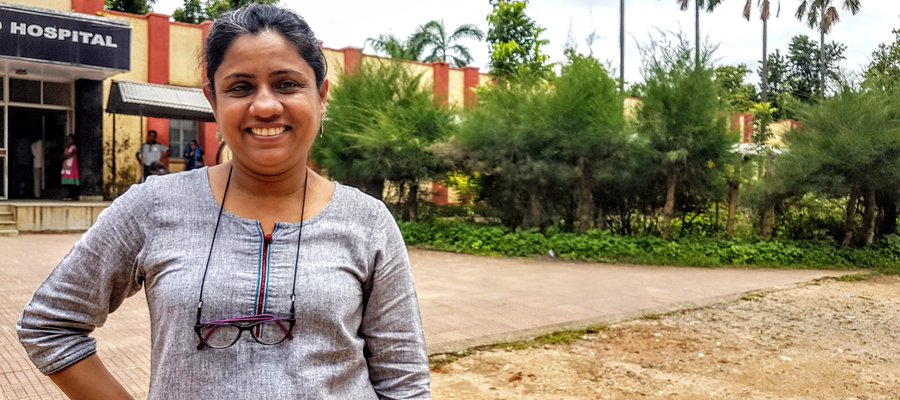3 Ways scientists are creating a world without leprosy

Leprosy is one of the oldest diseases in the world and there are still millions of people across the world who are struggling with its consequences. Fortunately, we could be the generation that ends leprosy for good. Here are three fantastic tools that scientists are working on right now that will push us towards zero leprosy transmission by 2035.
- A finger-prick test that can diagnose leprosy within minutes
One of the big problems we face with leprosy is that people can have the disease for years without knowing it because symptoms take a long time to appear. That means they could pass it to the people they have close contact with without realising it. This allows transmission to continue in communities and makes it hard for us to eliminate the disease. Scientists estimate that there are ‘missing millions’ who have leprosy but don’t know it.
One way to tackle this problem is through accurate and fast testing for leprosy. At the moment, someone who lives with or near a person who has just been diagnosed with leprosy won’t be tested for the disease unless they are showing symptoms themselves because there is no simple way to diagnose them.
Our team in Bangladesh are working on a finger-prick test that could diagnose leprosy within minutes. This will allow us to find cases of leprosy earlier and provide treatment to everyone who tests positive for leprosy much earlier than we do now. This super-fast testing will reduce the spread of leprosy in the community as well as reduce the risk of developing leprosy-related disabilities. Read more about this here > - Using smartphones to detect leprosyDiagnosing leprosy faster is so important to stopping the spread of the disease. That is why we have more than one research project that is looking at diagnostic tools. Our team in Mozambique are looking at the possibility of using smartphones to diagnose leprosy quickly.
They are looking whether leprosy is detectable through spectral imaging. If it is, a smartphone with some added software could identify signs of leprosy immediately using its camera.
Like our finger-prick test in Bangladesh, this spectral imaging test will allow us to treat people much quicker than we are currently able to. Treating people quicker means reducing the chance that they could pass the disease on to other people and helps us end transmission within communities. Find out more about this here > - Treating people before they develop leprosy
Another way to stop transmission is to treat people who may have been exposed to the leprosy germ, but haven’t yet developed the disease. This is known as a post-exposure prophylaxis (PEP). The World Health Organization (WHO) already recommends the use of single-dose rifampicin as PEP to significantly reduce the risk of developing leprosy. Like the diagnostic tests, PEP can be used to stop leprosy being transmitted within a community.
Our teams are part of global efforts to test and roll out PEP in different contexts across the world. This includes looking at alternative drugs for PEP. We think it’s going to have a huge impact on the number of people diagnosed with leprosy. Read more about PEP here >
Our scientists are giving us real reason to hope that a world without leprosy is within reach. Their work is absolutely vital and you can contribute to it here.